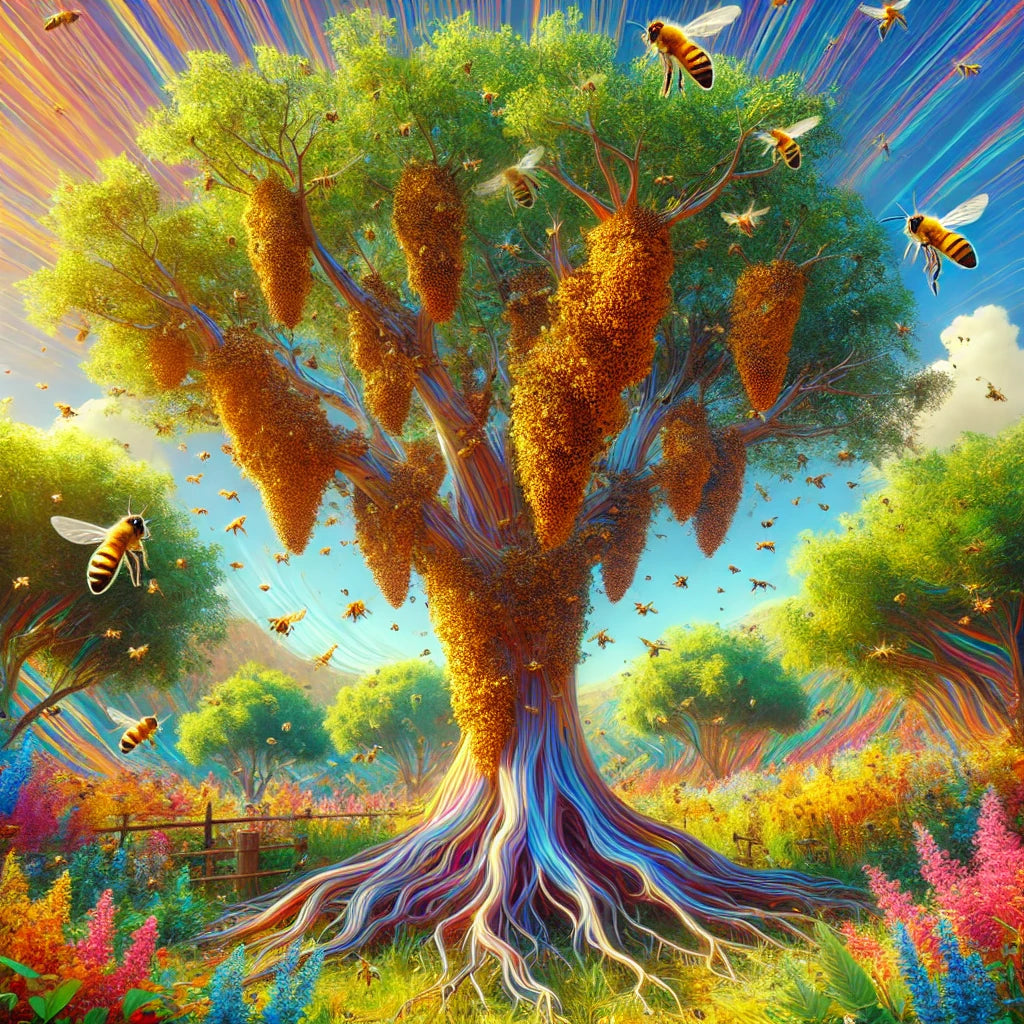Imagine walking into your backyard only to find a swarm of bees in your tree—not once, but three times! This scenario might sound overwhelming, but it's more common than you think. Swarming is part of the life cycle of bees, especially during the active spring and summer months.
Trees can offer the ideal shelter for bees, leading them to swarm repeatedly. But what causes bees to swarm multiple times in one place? Understanding this natural process is key to managing it effectively.
Why Bees Swarm Multiple Times
Bees are driven by nature to swarm as part of their reproductive cycle. Healthy, well-managed colonies are more likely to swarm, and sometimes a single tree can host multiple swarms. The swarming process happens when the colony becomes overcrowded or the hive conditions no longer meet the colony's needs.
Trees with hollow trunks or shaded areas provide ideal conditions for swarming bees to settle. In some cases, the original swarm can attract additional swarms, which explains why multiple swarms may choose the same tree. This situation is not unusual, as swarming is a sign of a healthy, robust colony.
How to Manage Multiple Swarms in Your Tree
If you find yourself with multiple swarms in your tree, it's important to manage the situation carefully. Attempting to remove or relocate the bees on your own can be dangerous without the proper tools or experience. Instead, consider using products like bee trap attractants to manage the swarming behavior. Additionally, contacting a professional beekeeper to assist with relocation can ensure the safety of both the bees and your property. Proper handling of multiple swarms ensures that the bees can continue their important work without becoming a nuisance.
The Importance of Swarming for Bee Colonies
Did you know that swarming plays a crucial role in the survival of bee colonies? When a colony swarms, it divides into two groups: one group remains in the original hive, and the other forms a new colony. This natural process helps ensure the survival of the species and increases the number of pollinators in the environment.
Without swarming, honey bee swarms wouldn't be able to thrive, which would negatively impact agriculture and ecosystems. So while swarming might seem like a problem for homeowners, it's a necessary part of bee ecology.
Preventing Excessive Swarming
While swarming is a natural behavior, it can become problematic when multiple swarms occur in the same tree. To prevent this, beekeepers use several techniques, including hive splitting, checkerboarding, and providing ample space for the colony to grow. These methods help ensure that bees have enough room in their hives, reducing the likelihood of overcrowding and the need to swarm. If you're interested in how to start a bee farm, learning how to manage swarming is essential for maintaining a healthy colony. Early intervention and monitoring are key to preventing excessive swarming.
How Bee Swarms Impact Agriculture
Bee swarms are more than just an occasional nuisance—they're vital to the agricultural industry. Bees are responsible for pollinating a significant percentage of the world's crops, and without their swarming behavior, colonies wouldn't be able to reproduce.
This is why why honeybees are so vital to agriculture. By understanding the importance of bee swarming and managing it effectively, both beekeepers and farmers can benefit from increased pollination and healthier crops. Swarming, while inconvenient, plays an essential role in maintaining the balance of our ecosystems.
Keep Your Swarm in Check – Act Now!
Don’t let multiple bee swarms take over your tree. Swarm Commander offers tools like bee traps and attractants that help you manage swarming while keeping your colonies healthy and productive. Check out our range of products today and gain control over swarming behavior.
Frequently Asked Questions About Honey Bee Swarms
Q1. Why do bees swarm multiple times in the same tree?
Swarming is a natural part of bee colony reproduction, and trees that provide optimal shelter can attract multiple swarms.
Q2. Can I relocate a swarm from my tree safely?
Yes, but it’s best to use professional services or products like bee trap attractants to ensure safe removal and relocation.
Q3. How does swarming affect honey production?
Swarming can reduce honey production temporarily as the colony focuses on reproduction, but proper hive management can help minimize this impact.
Q4. What’s the best way to prevent bees from swarming?
Techniques like hive splitting and checkerboarding can help prevent swarming by ensuring the bees have enough space and resources.
Q5. How does swarming benefit agriculture?
Swarming helps increase the bee population, which is crucial for pollinating crops and supporting ecosystems. Without swarming, bees wouldn’t be able to reproduce and sustain the agricultural industry.



